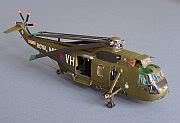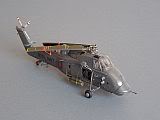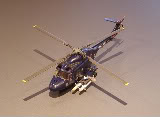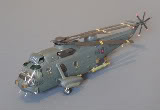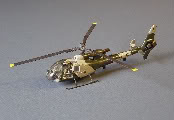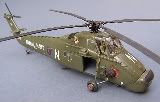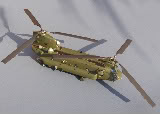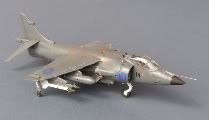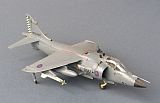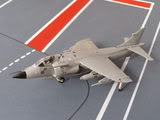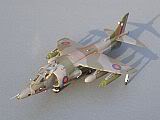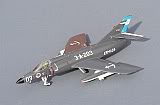![]()
![]() Selected
WW2 70th Anniversaries this month:
Selected
WW2 70th Anniversaries this month:
Between 2009 and 2015, I will be pursuing a general modelling theme that marks selected 70th Anniversaries from WW2.
1 May 1942 - Japanese forces capture Mandalay and other Burmese ports. By 20th May they have occupied the whole of Burma.
4 - 8 May - The Battle of the Coral Sea. US and Japanese naval forces engage in a major battle without the main forces ever coming into visual range of each other. US carrier LEXINGTON is sunk and the YORKTOWN badly damaged, but the apparently unstoppable Japanese expansion has been halted at last and the Japanese invasion of Port Moresby is called off. Fleet carriers Sho-kaku and Zuikaku are damaged and must be withdrawn for lengthy repairs.
5 May - Operation Ironclad - British and Commonwealth forces invade Vichy French Madagascar to prevent its use by German and Japanese naval forces. Fighting continues until November.
12 May - The Red Army begins a massive counter offensive around Kharkov. By the end of the month it has failed and the German Army is heading for Stalingrad.
26 May - Rommel begins his Spring offensive at the Gazala line west of Tobruk. His forces swing south via Bir Hakeim, where Free French forces manage to delay them for 16 days, Tobruk is recaptured by Rommel, but the delay has permitted el Alamein to be reinforced.
30 May - Operation Millennium - Cologne suffers the first "1000 Bomber Raid" by the RAF. German air defences are overwhelmed by the sheer numbers of attacking aircraft and more than 1,400 tons of bombs are dropped. Nearly 500 people are killed with over 5,000 injured. Pilot Officer Leslie Thomas Manser RAF, flying an Avro Manchester, is posthumously awarded the VC for his actions during the raid.
..................on the same day, against all odds, the USS YORKTOWN leaves Pearl Harbor after rapid repairs to damage sustained in the Coral Sea, to rejoin the US Fleet at Midway.
3 Cdo Brigade Air Squadron, Falkland Islands, May 1982
Airfix, 1/72 with decals from the spares box.

The Westland Scout entered service with the Army Air Corps and Royal Marines 3 Commando Brigade Air Squadron in 1963, serving right up until the mid 1990s.
|
Similar in design to the Naval Wasp, but with a skid undercarriage and non-folding tail, the Scout saw operational service in Borneo, Aden, Oman, Rhodesia, Northern Ireland and the South Atlantic. Twelve aircraft deployed to the Falkland Islands in 1982, six each with the Royal Marines (3 Cdo Bgde Air Sqn) and Army Air Corps (656 Sqn AAC). Used for casevac, light transport, ammunition resupply and special forces insertions, they played a major part in the operation to recover the islands, including the firing of twelve SS.11 missiles by three Scouts (1xAAC, 2xRM) hovering 100m apart on the ridge overlooking Stanley Racecourse, which successfully destroyed a battery of 105mm Argentine howitzers, bunkers, an ammunition dump and command post. Picture © Crown copyright. IWM (FKD 317) |
|
![]() One
Scout aircraft from 3 Cdo Bgde, Scout XT629, became the only
Argentine air-to-air combat victory of the war when it was destroyed
by cannon fire from 2 Pucaras north of Goose Green on 28th May 1982,
resulting in the death of its pilot, Lt Nunn Royal Marines and
resulting in severe injuries to his crewman.
One
Scout aircraft from 3 Cdo Bgde, Scout XT629, became the only
Argentine air-to-air combat victory of the war when it was destroyed
by cannon fire from 2 Pucaras north of Goose Green on 28th May 1982,
resulting in the death of its pilot, Lt Nunn Royal Marines and
resulting in severe injuries to his crewman.
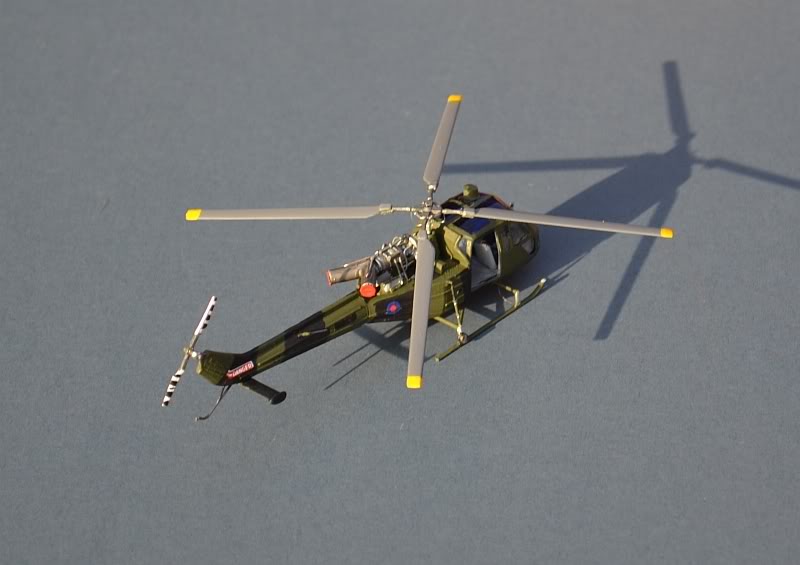
So what does the modeller with too many Harrier models already build as a Falklands 30th Anniversary build? A Westland Scout of course!
This is another underrated Airfix gem, albeit definitely one "in the rough"; it is still the only Scout kit out there and by no means easy to build. Indeed I would describe building it as "challenging". When it was more easily available there was a wide range of aftermarket parts for this kit, including several superb Wasp conversions in resin and white metal, resin engines, SS.11 missiles and vac-form canopies. The latter of these is sorely missed, as the kit part is not a very accurate shape and is almost impossible to fit well. I gave up on mine in the end, trimmed off the rear edges and used Krystal Clear PVA to fill the gaps - which actually looks like a good solution in retrospect! One of my lower front windows was missing too, so received the same treatment.
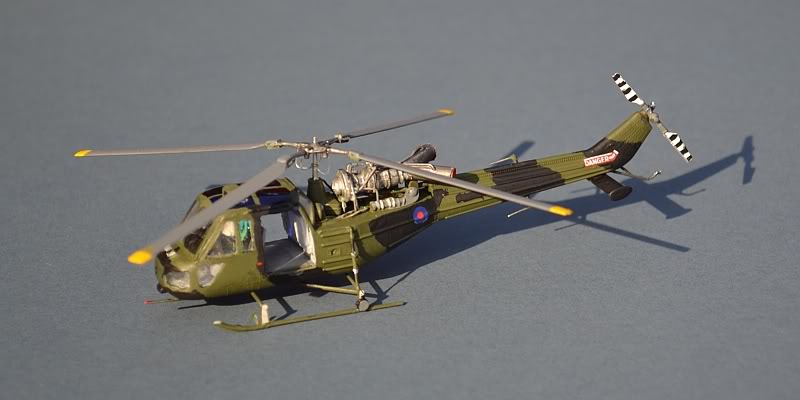
The kit is a reasonably fast build as there are few parts, but it needs a considerable amount of care and is very definitely not one for the beginner. Many parts are difficult and fiddly to fit, particularly the skids, which are a complex assembly and extremely delicate in this scale. The exposed engine area is also rather malnourished looking, when compared with the marvellous resin engine alternatives and the rotor shaft is far too simplified - the real thing has a great many levers and struts.
In view of their role, Scouts in the Falklands generally flew with their back doors removed, allowing easy loading and unloading. This is quite fortunate for the modeller, as later aircraft flew with bulged perspex rear doors that are very different to those supplied in the kit. Removing the doors looks like a difficult operation, but isn't as hard as it seems - I simply cut a large section out with a razor saw, then whittled away the rest with a sharp modelling knife. I briefly considered removing the front doors as well (as I did on my Wasp conversion), but decided this would really be pushing my luck!
To liven the model up a bit and bring it up to the Falklands era, I added several generic details from wire and sprue, including the upper roof sights, blade antenna on the nose, engine mundungus and some replacement exhaust pipes. I also had some left over photo-etch exhaust covers from my Wasp build, which were duly applied. Thicker seat squabs were fitted to improve the front cabin, along with simple seat belts.
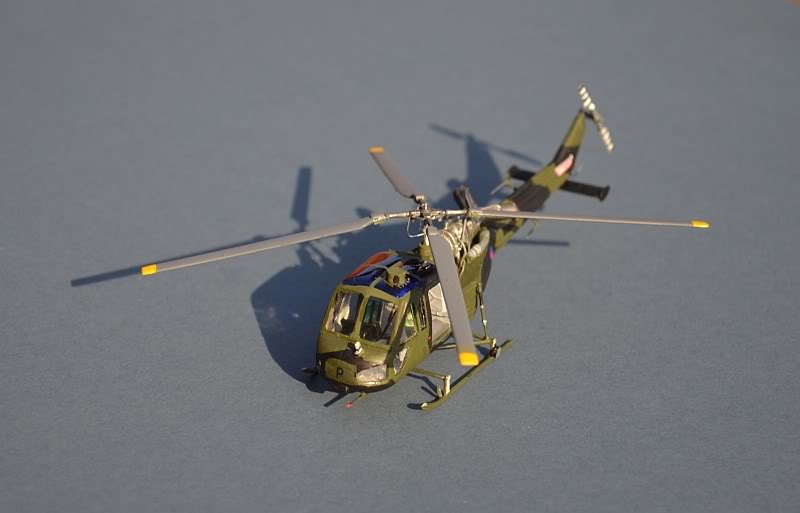
Amazingly, this kit is not a tail sitter, although the stress of its own weight on the after skids doesn't bode well for transporting it to model shows and I may need to add some strengthening in due course! Decals are a mix from the spares box.
And here she is with my Wasp model:
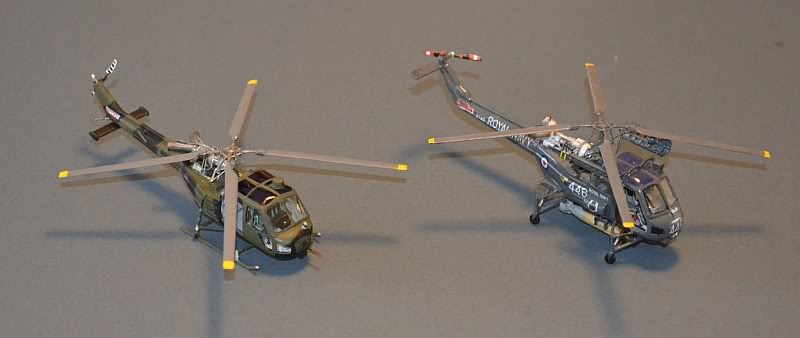
More Helicopters on my Helicopter Pages
B Squadron, Blues and Royals, attached to 3 Cdo Brigade, Falkland Islands, April 1982
Airfix 1/72, with scratch add-ons.
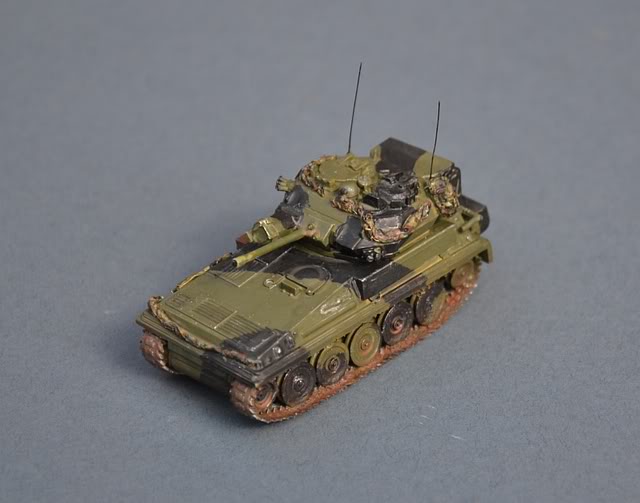
The Scorpion entered service in the early 1970s as a fast armoured reconnaissance vehicle. Armed with a 76mm gun, it was originally fitted with a Jaguar 4.2 Litre petrol engine, allowing it to move around the battlefield at very high speed. More recent models were retrofitted with a modern diesel engine, retaining much of the performance but gaining considerably more fuel economy. The Scorpion left British Army service in 1994, although some vehicles were converted to become the Sabre, retrofitted with turrets from the obsolete Fox armoured car, to undertake the same role as the Scimitar.
|
Scorpions have seen active service around the world, including the 1982 Falklands War and 1991 Gulf War. Two troops of Scorpions were deployed to the Falklands, providing essential fire support to the forces retaking the islands from their Argentine occupiers. The knowledge that the British had brought tanks with them had a significant psychological effect on the Argentine occupying forces. Just like the QDG represented by last month's FV107 Scimitar model, the Blues & Royals were also serving in North Africa 70 years ago this month. Formed by the amalgamation of the Royal Horse Guards and Royal Dragoons, both regiments that were serving as part of the forces concentrated around Tobruk/Gazala in May 1942, awaiting Rommel's forthcoming spring Gazala offensive.
Picture © Crown copyright. IWM (FKD 417) |
|
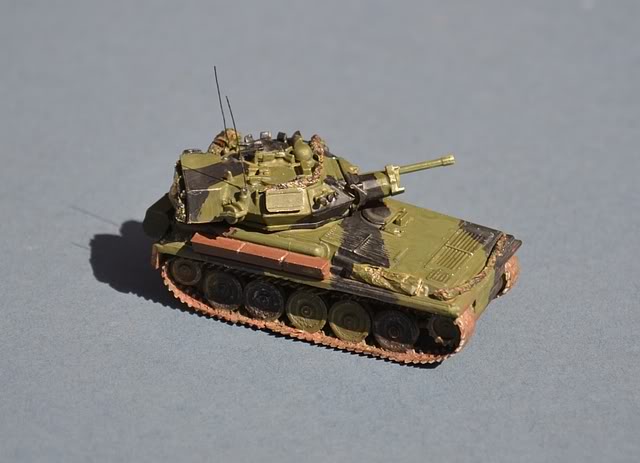
This is actually what I meant to build with last month's Scimitar kit, so let's try again. The Airfix kit provides optional parts for a Scimitar or Scorpion, with a slightly different gun mantlet and barrel for each. This one is rather closer to being built "out the box", but as with last month I have made a few changes to reflect an in-service vehicle, in this case one of the Scorpions deployed to the Falkland Islands in 1982.
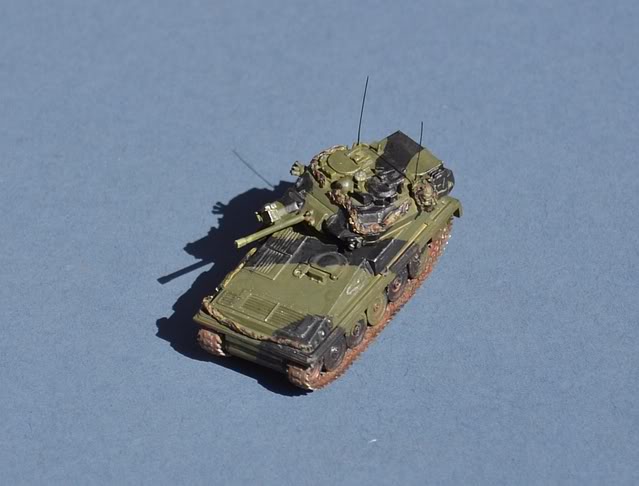
On this build I had significant problems with the tracks, which are a real shortfall in this otherwise nice little kit. The supplied items are very stiff and a little brittle. I broke one in an attempt to stretch it slightly, because they are also a little too short. In the end, floods of superglue were the only solution and even then they don't bear too close an inspection!
Once again, I have used sprue and silver foil to add some upper deck clutter, complete with another Kingfisher accessory rucksack.
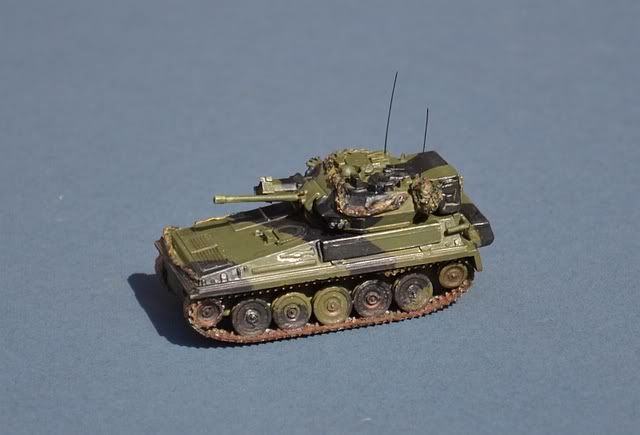
.............and together with last month's Scimitar:
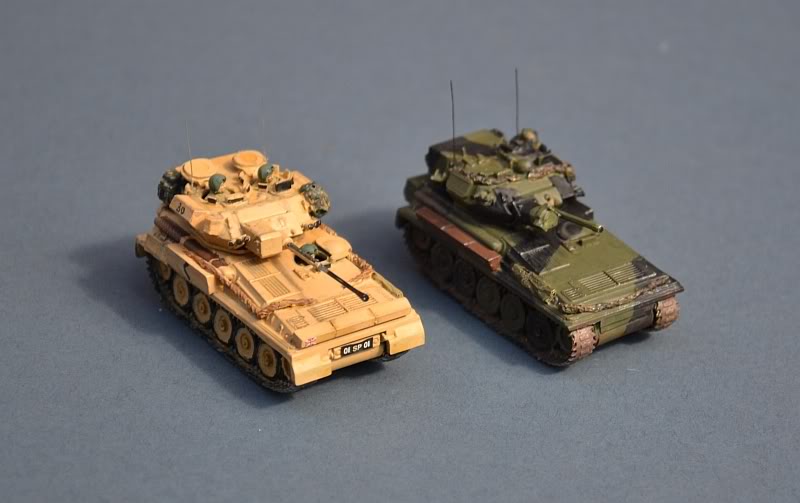
More AFVs and tanks on my Dark Side pages
Gruppo 5, Fuerza Aerea de Chile, El Tepual Military Air Base, Puerto Montt, Chile 2008
Matchbox/Revell 1/72
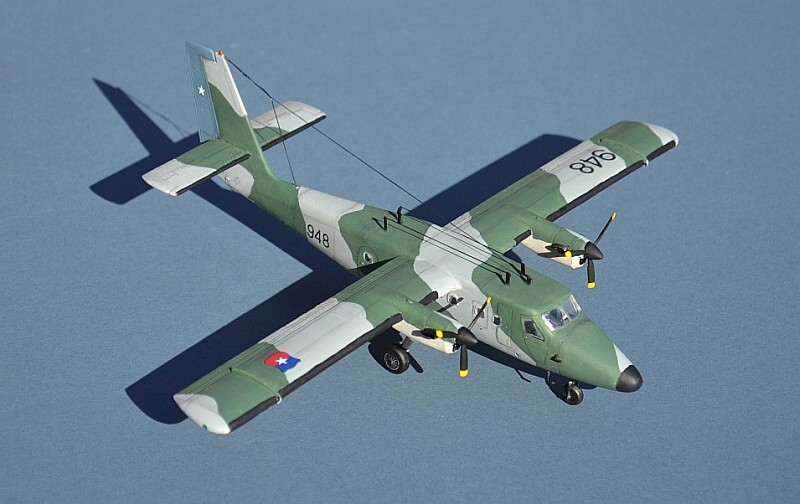
The DHC-6 Twin Otter is a 20 passenger turboprop STOL aircraft that first flew in 1965. Developed from the highly successful single piston engined DHC Otter, the improved reliability and power of the Twin Otter assured its success in bush and rough field operations around the world with over 850 built to date.
De Havilland Canada (owned at the time by Boeing) ended production in 1988, but eighteen years later in 2006, Viking Air announced that it would restart production of a modernised and improved variant, with the first new aircraft receiving type certification and being successfully delivered in 2010.
The Chilean Air Force is the 4th oldest independent air arm in the world and took delivery of its first Twin Otters in 1967, operating them in widely varying conditions across their very long country, from the hot and high desert airstrips of the north through the temperate central valleys to the snow covered strips of the south and on into the antarctic.
This is a quick build to finish the month and has no real connection with any of my other building themes, just purely for fun.
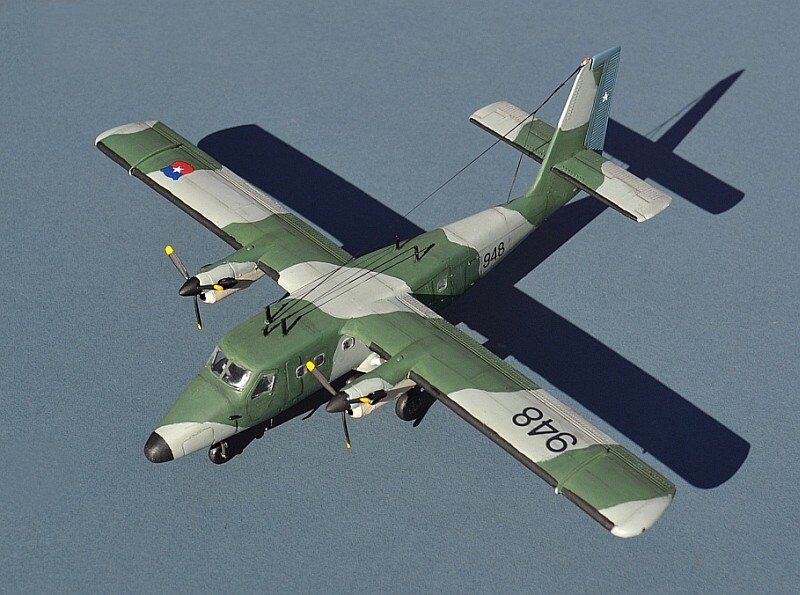
Revell re-released the old Matchbox DHC-6 kit a few years back as one of their limited edition "classic kits", with some typically superb modern decals for a short-nosed yellow Canadian Forces aircraft and for another rather unimaginative long-nosed yellow example belonging to Guernsey-based Aurigny Air Services. I have another kit in the stash and fully intend to build it as a Canadian Float-plane, but fancied doing something a little different and more "military" for this long-nosed one.
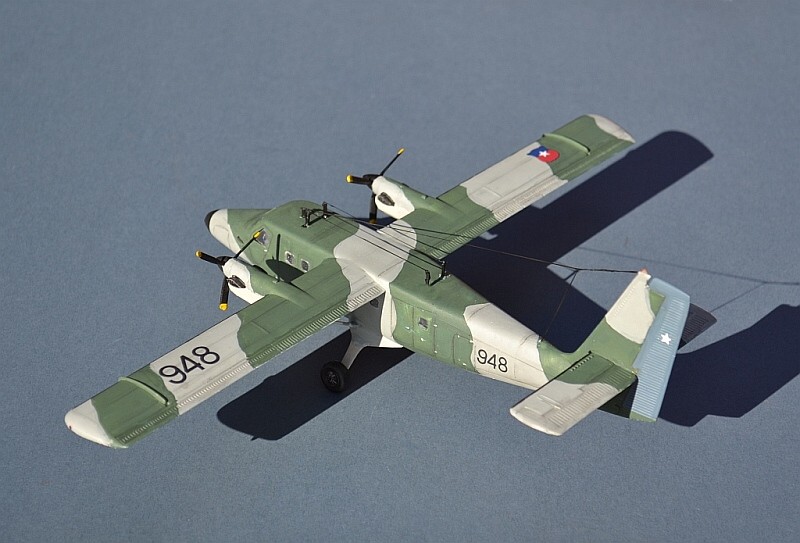
In typical Matchbox style, the kit has limited detail and is rather chunky, but it goes together very well, with precise fit and negligible flash. I filled the nose seam with some Tippex and did some heavy duty sanding of the upper and lower fuselage joints. Mine came in two shades of plastic (like a real Matchbox kit!), with 2 white sprues and one light grey. Both colours proved difficult to cover easily and needed additional coats of paint before I achieved an even finish. Decals are from the spares box (with Chilean national markings from the Airfix PR Canberra).
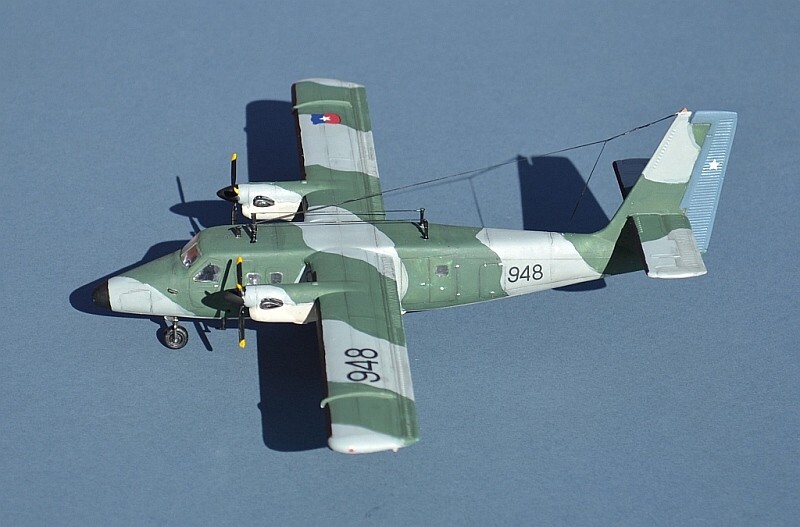
Have a look at the rest of my Falklands Era Models:
Background Picture - Falkland Islands Crest, as displayed at Doncaster Aeroventure
Link to previous month Link to Next Month
www.gengriz.co.uk
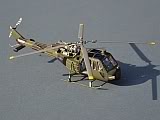
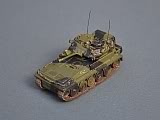
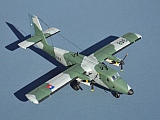
.jpg)
.jpg)
